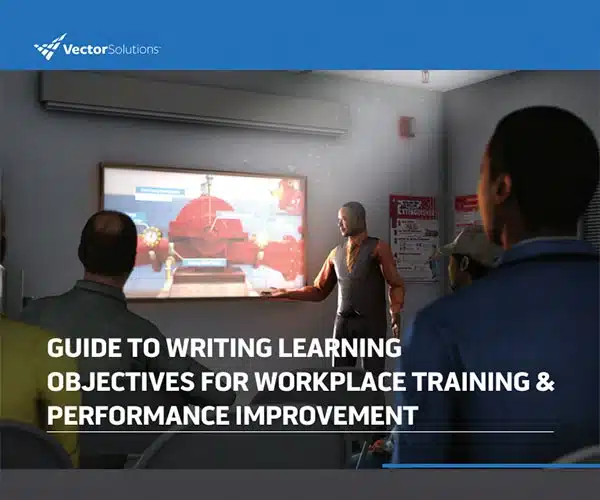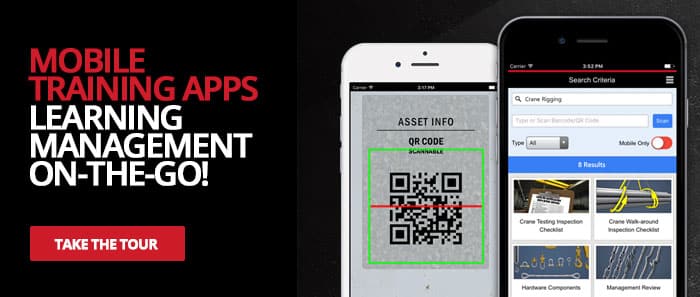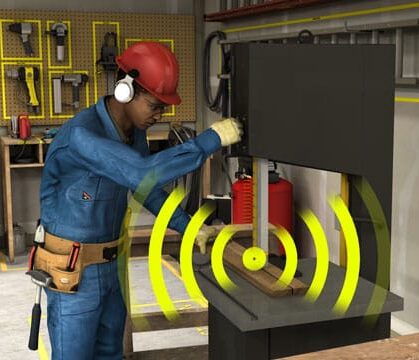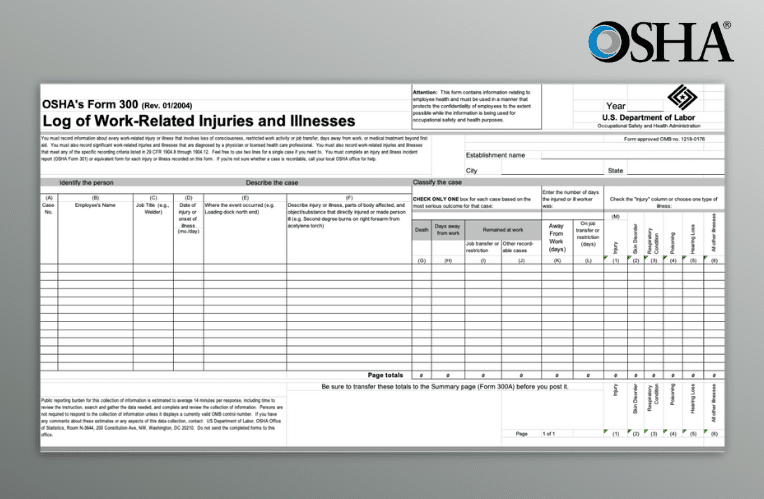February 15, 2021 10 min read
Tips for Writing Instructional and Training Material
Industry:
Solution:
It’s not easy to write well. Or, as Ernest Hemingway put it, “Easy writing makes hard reading.”
As a writer, you want to do the difficult work so your reader doesn’t have to. And while it’s true that all types of writing are difficult, it’s also true that each type of writing presents its own special challenges. That’s definitely the case when it comes to writing instructional or training materials. So, we’ve created a list of tips and resources to help you write better, more effective training materials.
We hope you find these helpful; feel free to contribute your own ideas in the comments section below.
Please note this article REALLY is about WRITING, so it covers just a small amount of designing, developing, and delivering training materials. If you want a bigger, bird’s-eye view of designing, developing, and delivering, you may find these articles helpful:
- Effective Training Programs: 8 Steps to Success
- Tips for Training Visuals
- How to Write Learning Objectives (interview with Dr. Patti Shank)
- How to Write Learning Assessments & Multiple-Choice Questions (interview with Dr. Patti Shank)
- What Is Evidence-Based Training?
- Learning Myths
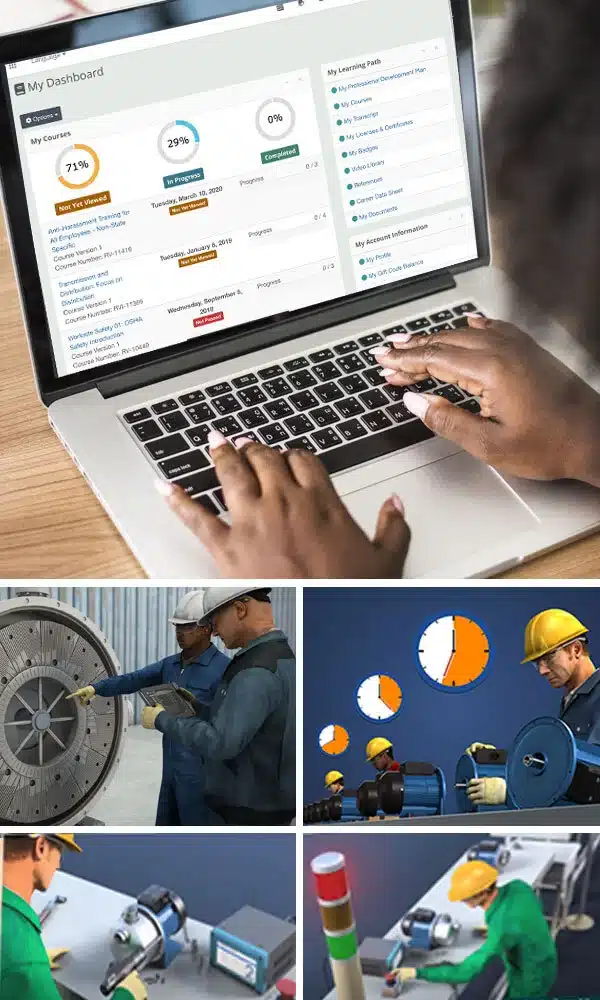
Vector EHS Management Software empowers organizations – from global leaders to local businesses – to improve workplace safety and comply with environmental, health, and safety regulations.
Learn more about how our software can save you valuable time and effort in recording, tracking, and analyzing your EHS activities.
Learn more about how we can help:
- Incident Management Software →
- EHS Inspection Software →
- Key Safety Metrics Dashboard →
- Learning Management System (LMS) and Online Training Courses →
- Mobile Risk Communication Platform
Download our EHS Management Software Buyer’s Guide.
General Writing Tips for Training Materials
The following writing tips apply to any kind of training materials: things people will read in a printed document, the narrated script of an online course course, the words on a computer screen, and more.
Know your audience (the trainees/learners)
Every aspect of creating training materials begins with knowing your audience. And so it follows it’s true when you’re writing training materials too.
Know the learners’ conversational language, their reading abilities, their culture, their amount of time available for training, their interests, and more.
Write for your training audience
Once you’ve learned about your learners, keep their learning needs and characteristics in mind while writing for them.
Write to your training audience
Use the second person and refer to the learners as “you.” Don’t ignore the audience you’re hoping to train by writing simply about work processes or machines. And don’t write about the learners in the third-person–address them directly.
Use conversational language for training
Write the same way your audience talks. A lot of people fall into an artificial, formal style when they write training materials, even though it’s harder for the audience to read. Avoid that. But remember, being conversational doesn’t mean you should include lots of slang or potentially offensive language.
Tell stories to improve training
People are “hard-wired” to enjoy and remember stories. Don’t just tell someone something–tell a story they can engage with. Stories also help to inspire the learners to apply what they learned after the training is done.
Click to read an extensive interview with Anna Sabramowicz about storytelling and training.
Put people in scenarios
People are more interested in something that’s happening to someone else or to themselves. Put the learning experience inside the kind of scenario employees will be faced with on the job.
Use short words instead of big words
When possible, avoid using big words when a shorter, more familiar word will do. For example, write “buy” instead of “purchase” and “person” instead of “individual.”
Here’s a good article about using short words.
Use short and simple sentences
Long sentences may confuse your reader. This is even more true if the sentence structure is complex. So use short, simple sentences instead.
Here’s a good resource about simple and complex sentences.
Keep the training short
There are limits to how much people can pay attention to, how much information they can process, and how much they can remember during training.
Just write about the important stuff your learners need to know. Don’t add more material simply because you think it’s interesting. Remember that everything you write should be focused on a learning objective. In training, less really is more (effective).
Here’s a good article about how people learn.
Break your piece up into smaller “chunks”
Break your content into smaller parts, or “chunks.” That’s because most people can only keep 4-7 bits of information in their short-term memory without losing the information.
Here’s a fuller explanation of chunking your instructional material.
Format your “chunks” visually for easy reading
Your computer gives you tons of tools to format those little chunks of information–use ’em.
Use headers to explain what each chunk covers, and put them in bold font. Use bulleted lists and tables to break information down so it’s easier to scan and quickly understand. Present information in parallel structures.
Here’s a fuller look at formatting written training materials to increase training effectiveness.
Write at an appropriate reading level
The average American reads at about a 7th or 8th grade level. So you should generally keep your writing at that level, too.
If you’re writing for doctors, attorneys, and engineers, write at a higher level. If you’re writing for people who don’t speak English as their first language, write at a lower level.
Most word processors, including Microsoft Word, have a tool to analyze the readability of your material.
Don’t explain things your training population already knows
Don’t insult, bore, and turn off your audience by explaining things they already know. For example, if your goal is to train them how to make a common household item, don’t start by explaining what the item is. It’s a toaster–they know what a toaster is.
Here’s more about how to keep material that’s too basic out of your training materials.
Don’t explain things your training population doesn’t need to know
It’s it’s not necessary, leave it out. For example, if you’re teaching learners to make a common household item, your training shouldn’t start with a 15-minute history of that item’s development over the past three centuries.
They just need to know how to make it. They don’t need to write a PhD dissertation about its role in society or its development throughout history.

Avoid specialized language (“jargon”) when possible
Every field has its own specialized language known as jargon. Jargon can be a useful type of shorthand or code for experts, but non-experts often don’t understand what it means.
When you can, avoid using jargon in your training.
If you must use jargon, define it
If it’s necessary to use jargon, make sure you explain it to the learners.
Write in the active voice
Active sentences tend to be shorter and less confusing. Passive sentences tend to be longer and more confusing. Stay active, my friend.
Here’s a good resource on writing in the active voice.
Use strong, descriptive verbs
Avoid using forms of “to be.” Using forms of to be, such as “is,” “are,” and “were,” is not as memorable as using strong and descriptive verbs.
It’s OK to be funny
A little humor helps. Don’t think this is forbidden.
Of course, don’t take this too far and use your training materials as a launchpad for your career as a stand-up comic. You’re creating training material, remember? Also, although this probably goes without saying, offensive humor that insults, demeans, offends, or includes one of the “-ism’s” forbidden at work isn’t what you’re going for here.
Here’s a good article on the use of humor in training, and here’s a good example of the use of humor in training.
Be consistent with your terms
If you’re identified something as a “widget” in your introduction, keep calling it a widget throughout. Don’t suddenly call it a “whatchamacallit” in a later section just to shake things up.
Be careful with pronouns
When you refer to a noun by its name (example: refrigerator), everyone knows what you’re talking about. If you begin using pronouns (example: it) instead, though, you may confuse people. Things get even more confusing if the learners can’t tell if the “it” refers to a refrigerator or a toaster that you also mentioned.
Consider cutting down on your use of pronouns, and be careful to avoid confusion when you do use them.
It’s OK to use contractions
It’s fine to use contractions (for example, to use “don’t” instead of “do not” and “can’t” instead of “cannot”). In fact, it’s good, because it sounds more conversational.
So go ahead and use contractions–it’s good for the training.
Here’s more about using contractions in training materials.
Don’t let your subject matter expert (SME) do the writing
Subject matter experts, or SMEs, are bright people. They’re passionate experts on the topic they’re describing. This makes them prone to violate many of the rules we just discussed-even if they DO happen to be good writers, which isn’t always true. Here are some more tips on working with SMEs.
Proofread several times
Always proofread your own materials. Do it several times. Read it aloud to yourself–this can really help. Don’t just rely on your spell-checker (but yes, use it too).
Read it out loud to yourself
Careful readers may be saying “Hey, you just said that above.” And that’s true. But it bears stating again, plus several readers added that comment after reading this article (see comments below, for example), so I’m thinking maybe people missed it.
Have someone else review your writing
Even the best writers benefit from having someone else read their stuff to point out what’s clunky or confusing.
Following the rules above should go far to get you writing effective training materials. Of course, the more you learn the better you’ll be, so we’ve collected some additional resources for you below.
Writing Rules & Style Guides
This list of resources that will help you with any type of writing.
The Elements of Style
The classic high school style guide by Strunk & White that’s still relevant in all fields today.
The Chicago Manual of Style
Probably the leading style guide.
The Associated Press Style Book
More relevant for journalists, but still useful.
Purdue Online Writing Lab (OWL)
A great resource for all things writing-related.
Grammar Girl
A fun and informative online guide to grammar.
Grammarly
An online writing app that helps you create better written materials for work. There’s a free version and a premium, paid version.
Merriam-Webster Dictionary and Thesaurus
Or any good dictionary and thesaurus. This one is online and free, and we like their occasional informative videos.
Microsoft Manual of Style for Technical Publications
Helpful if you’re writing about software.
More Tips for Writing Instructional & Training Material
Next, a list of resources to help you write instructional and training material. Obviously, this is nowhere near complete, but it’s still helpful.
Write and Organization for Deeper Learning by Dr. Patti Shank
A great research-based book with 28 tips based on evidence for writing more effective training and instructional materials.
Storytelling in eLearning by Anna Sabramowicz
Anna Sabramowicz is a very good instructional designer who focuses on scenario-based learning that is firmly rooted in storytelling. This is a series of videos to help you get started.
“10 Types of Writing for eLearning” by Connie Malamed
A nice overview of the different styles of writing required in e-learning.
“8 Tips for Better Writing,” by Connie Malamed
8 simple-yet-effective tips from a journalist.
“Less Text, More Learning” by Cathy Moore
A nice explanation of why fewer words = more learning.
“Why You Do Not Want to Sound Like a Robot” by Cathy Moore
An argument for conversational language-including contractions!
“How to Recognize Elearning Bloat” by Cathy Moore
How to know when you’re writing too much.
“How to Get Everyone to Write Like Ernest Hemingway” by Cathy Moore
Good arguments in favor of lower reading levels.
“No More Spilled Ink: Writing for Instructional Design” by Connie Malamed
A great overview of writing issues for instructional designers.
“Writing Styles for eLearning Narration” by Tim Slade
A thoughtful, helpful discussion of writing for e-learning.
“Why You Need Scenario-Based e-Learning” by Connie Malamed
A podcast during which one of my favorite instructional designers, Connie Malamed, discusses the importance of scenarios in e-learning with another great instructional designer, Ruth Colvin Clark. Not as directly related to writing style as the other comments and links above, but worth your time nonetheless.
“How to Write Compelling Stories” by Connie Malamed
Another podcast hosted by Connie Malamed. In this one, she discussed the importance of storytelling in instructional materials and talks with noted author and storytelling expert Lisa Cron, author of Wired for Story.
“Using Plain English to Write eLearning Courses” by Saffron Interactive/The Spicy Learning Blog
Tips along the lines of the ones offered in this article.
What Are YOUR Thoughts about Writing Training Materials?
So, what about you? Have any good tips or resources for writing instructional or training materials? If so, we’d love to see them below in the comments section.
How to Write Learning Objectives
Download the guide below for tips on writing learning objectives.
